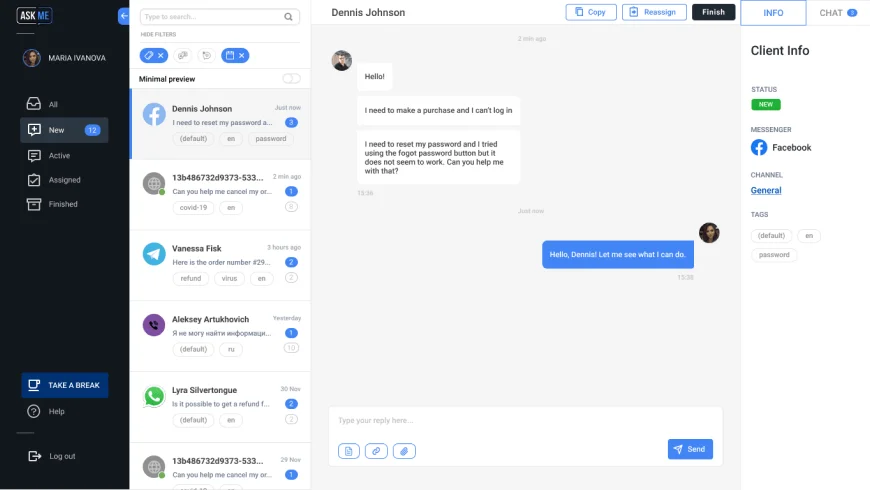Microcontrollers find applications where a general-purpose computer would be too costly. As the cost of microprocessors and microcontrollers fell, the prevalence of embedded systems increased. Microcontrollers are simply microprocessors with peripheral interfaces and integrated memory included.
It is a piece of embedded code written for particular hardware. The user has to derive the low-level drivers for the microcontroller or microprocessor using specific control and data registers given in the datasheet. Next to the top of the low-level driver a high-level driver has to be written for the application software.
Components of Embedded System
Some of the examples of input devices are sensors, switches, photo-diode, optocoupler etc. Every complex system in the world can be made based on https://www.globalcloudteam.com/ two ideas, Software and Hardware. To achieve that you have to start building smaller modules and integrate them to create an efficient subsystem.
- Insure++ Runtime memory debugging & leak detection for C/C++ apps.
- But an embedded Microcontroller or Microprocessor unit interfaces few or all the peripherals to the CPU on a single SOC IC.
- Most enterprises are building and buying network automation tools, and the reasons for both approaches are abundant.
- This method brings the system close to a multitasking kernel with discrete processes.
- This measure of the survival probability of the system when the function is critical during the run time.
In 2009, it was estimated that ninety-eight percent of all microprocessors manufactured were used in embedded systems. In either case, the processor used may be types ranging from general purpose to those specialized in a certain class of computations, or even custom designed for the application at hand. A common standard class of dedicated processors is the digital signal processor . These applications are usually on 8 and 16 bit microcontrollers with no formal operating systems, also known as bare metal.
Real-Time Operating System
The view of the code may be as high-level programming language, assembly code or mixture of both. An in-circuit debugger , a hardware device that connects to the microprocessor via a JTAG or Nexus interface. This allows the operation of the microprocessor to be controlled externally, but is typically restricted to specific debugging capabilities in the processor. A model-based development tool creates and simulates graphical data flow https://www.globalcloudteam.com/what-is-an-embedded-system-definition-examples/ and UML state chart diagrams of components like digital filters, motor controllers, communication protocol decoding and multi-rate tasks. PC/104 and PC/104+ are examples of standards for ready-made computer boards intended for small, low-volume embedded and ruggedized systems. These are mostly x86-based and often physically small compared to a standard PC, although still quite large compared to most simple (8/16-bit) embedded systems.

Other important hardware elements are memory, I/O devices, sensors, analog to digital converters, digital to analog converters, actuators, and peripherals. The hardware elements can be integrated on a single board, comprising a system on-chip. Also, a more complicated board- a system on the module- can be used for different projects.
Advantages of Embedded System:
It should work really fast and process the data in real-time while doing all of that by consuming minimal parts in order to save the battery and extend its life. Embedded systems are designed to perform a certain function either independently or as a part of a bigger system. They are hardware systems with built-in software, which have an integrated circuit at their cores that carries out computations for real-time operations. Input devices are devices that receive data from the outside environment. Sensors, switches, photodiodes, optocouplers, and other input devices are examples of input devices. The output devices are the results that occur due to input events from outside the microcontroller.
Embedded systems use the communication ports to transmit data between the processor and peripheral devices — often, other embedded systems — using a communication protocol. The processor interprets this data with the help of minimal software stored on the memory. The software is usually highly specific to the function that the embedded system serves. Simulation is conducted to select the right components by performing power vs. performance trade-offs, reliability analysis and bottleneck analysis. In certain applications, where small size or power efficiency are not primary concerns, the components used may be compatible with those used in general-purpose x86 personal computers. Boards such as the VIA EPIA range help to bridge the gap by being PC-compatible but highly integrated, physically smaller or have other attributes making them attractive to embedded engineers.
General Purpose Operating system
By increasing the reliability and performance, some systems are mass-produced; this largely helps the economic area. The embedded operating system improves overall efficiency by controlling all hardware resources and minimizing response times for specific tasks for which devices were built. Usually, if it runs on generic hardware such as a typical PC or server, it’s not considered embedded. Physically, the applications aren’t bundled with hardware as one and inseparable.

The application of MOS LSI chips to computing was the basis for the first microprocessors, as engineers began recognizing that a complete computer processor system could be contained on several MOS LSI chips. It is a very simple type of operating system designed to perform only one function. It is used in several devices, including smartphones, thermostats or temperature controls, digital controllable equipment, etc. Users may set any point of temperature variable as desired in this type of OS.
Embedded Software Development Life Cycle
Reduced functionality in the event of failure may be intolerable. Examples include aircraft navigation, reactor control systems, safety-critical chemical factory controls, train signals. For systems using digital signal processing, developers may use a computational notebook to simulate the mathematics. It is supported with task synchronization, memory efficiency management, and other features.

To store the data and deal with memory management, memory devices like flash and SD card, EEPROM is required. Some of the memories used in the embedded system are Non-Volatile RAM, Volatile RAM, DRAM etc. Many of you confuse between the two words, but there is a primary difference between the Microprocessor and Microcontroller in embedded CPU. A general-purpose CPU in a computer like a Microprocessor has external peripherals (Real-time Clock, USB, Ethernet, HDMI etc.) physically connected to it and are visible outside. But an embedded Microcontroller or Microprocessor unit interfaces few or all the peripherals to the CPU on a single SOC IC. An embedded systems engineer is responsible for designing, developing, and managing embedded systems in products.
Real-Time Embedded Systems
C, C++, Java, and source code engineering tool, etc. are used to develop this kind of embedded system. Microcontrollers are widely used in embedded systems for real-time control applications. A Real-Time Embedded System is strictly time specific which means these embedded systems provides output in a particular/defined time interval. These type of embedded systems provide quick response in critical situations which gives most priority to time based task performance and generation of output. That’s why real time embedded systems are used in defense sector, medical and health care sector, and some other industrial applications where output in the right time is given more importance.